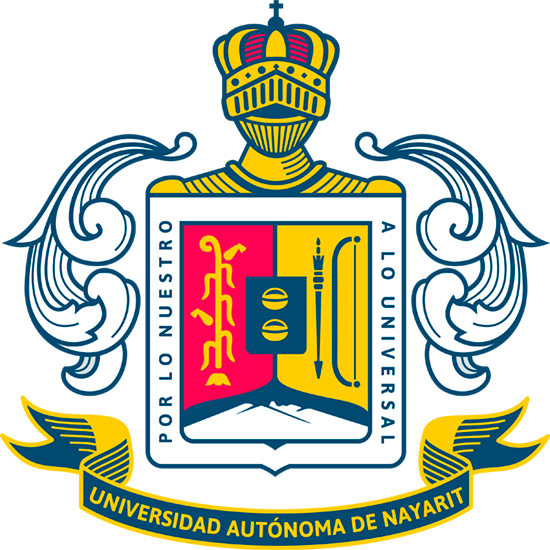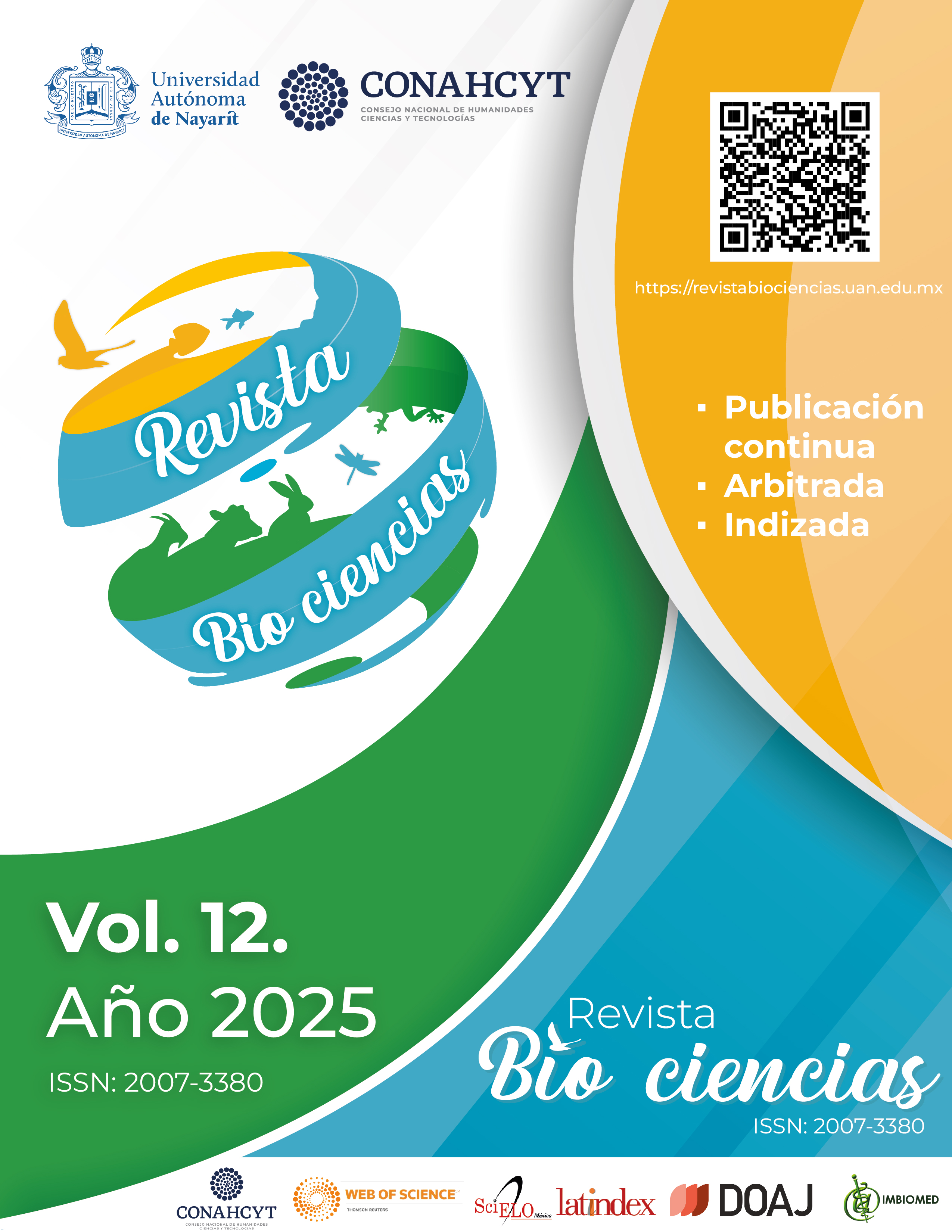Abstract
Agave salmiana is a maguey endemic to Mexico, its main product is pulque, a fermented mead. When the mead is exhausted, the maguey leaves are used as cattle feed. The objective was to prepare and evaluate extracts of maguey leaves, for which hot water and three stages of leaves were used, unscraped (SR), scraped (RM) and completely scraped (RC). Extracts were quantified for phenolic compounds content, ascorbic acid, antioxidant capacity (DPPH) and chelating activity, during their preparation and up to 8 months of storage. The phenolic compounds content (2913.33±277.9 mg GA/L), ascorbic acid (758.02±56.57 mg AA/L) and antioxidant capacity (930.7±44.09 µmol TE/L) increased during the elaboration of extracts. A 12.6-16.4% of dietary fiber was quantified in extracts. In addition, phenolic compounds (kaempferol and quercetin) were identified in the 3 extracts produced. During storage, phenolic compounds and their antioxidant capacity increased at the end of the eighth month in RM and RC extracts. It is concluded that the leaves of the maguey Agave salmiana can be used to obtain aqueous extracts rich in bioactive compounds with antioxidant capacity and dietary fiber, substances involved in the treatment and prevention of diseases.
References
Official Methods of Analysis. [AOAC]. (2006). “humedad: 920.151; proteína: 920.152; cenizas: 940.26”. AOAC International, 18th edition, Washington, D.C. USA.
Barba, F.J., Mariutti, L.R.B., Bragagnolo, N., Mercadante, A.Z., Barbosa-Cánovas, G.V., & Orlien, V. (2017). Bioaccesibility of bioactive compounds from fruits and vegetables after termal and nonthermal processing. Trends in Food Science and Technology, 67, 195-206. https://doi.org/10.1016/j.tifs.2017.07.006
Bhattacharya, M., Hota, A., Kar, A., Sankar Chini, D., Chandra Malick, R., Chandra Patra, B., & Kumar Das, B. (2018). In silico structural and functional modelling of Antifreeze protein (AFP) sequences of Ocean pout (Zoarces americanus, Bloch & Schneider 1801). Journal of Genetic Engineering and Biotechnology, 16(2), 721-730. https://doi.org/10.1016/j.jgeb.2018.08.004
Brindhadevi, K., Chidambaram, M., Kavitha, R., Govindaraj, R., Chinnathambi, A., Salmen, S. H., Prabakaran, D. S., & Natesan, V. (2023). Extraction, antioxidant, and anticáncer activity of saponins extracted from Curcuma angustifolia. Applied Nanoscience, 13(1), 2063-2071. https://doi.org/10.1007/s13204-021-02096-9
Bouaziz, A., Masmoudi, M., Kamoun, A., & Besbes, S. (2014). Optimization of Insoluble and Soluble Fibres Extraction from Agave americana L. Using Response Surface Methodology. E-Journal of Chemistry, 13. https://doi.org/10.1155/2014/627103
Boukhatem, M. N., Boumaiza, A., Nada, H. G., Rajabi, M., & Mousa, S. A. (2020). Eucalyptus globulus Essential Oil as a natural Food Presercative: Antioxidant, Antibacterial and Antifungal Properties in vitro and in Real Food Matrix (Orangina Fruis Juice). Applied Science, 10(16), 5581. https://doi.org/10.3390/app10165581
Cunningham, M., Azcarate-Peril, M. A., Barnard, A., Benoit, V., Grimaldi, R., Guyonnet, D., Holscher, H. D., Hunter, K., Manurung, S., Obis, D., Petrova, M. I., Steinert, R. E., Swanson, K. S., Sinderen, D., Vulevic, J., & Gibson, G. R. (2021) Shaping the Future of Probiotics and Prebiotics. Trends in Microbiology, 29(8), 667-685. https://doi.org/10.1016/j.tim.2021.01.003
Domínguez-Zarate, P. A., García-Martínez, I., Güemes-Vera, N., & Totosaus, A. (2019). Texture, color and sensory acceptance of tortilla and bread elaborated with Maya nut (Brosimim alicastrum) flour to increase total dietary fiber. Ciencia y Tecnología Agropecuaria, 20(3), 699-719. https://doi.org/10.21930/rcta.vol20_num3_art:1590
Dürüst, N., Dogan, S., & Dürüst, Y. (1997). Ascorbic acid and element contents of food of Trabzon (Turkey). Journal of Agriculture and Food Chemistry, 45(6), 2085-2087. https://doi.org/10.1021/jf9606159
Escalante, A., López-Soto, D. R., Velázquez-Gutiérrez, J. E., Giles-Gómez, M., Bolívar, F., & López-Munguía, A. (2016). Pulque, a Traditional Mexican Alcoholic Fermented Beverage: Historical, Microbiological, and Technical Aspects. Frontiers in Microbiology, 7, 1026. https://doi.org/10.3389/fmicb.2016.01026
Espinosa, M. F, Sancho, A. A., Mendoza, L. M., Mota, C. R., & Verbyla, M. E. (2020). Systematic review and meta-analysis of time-temperature pathogen inactivation. International Journal of Hygiene and Environmental Health, 230, 113595. https://doi.org/10.1016/j.ijheh.2020.113595
García-Mendoza, A. J., Franco-Martínez, I. S., & Sandoval-Gutiérrez, D. (2019). Cuatro especies nuevas de Agave (Asparagaceae, Agavoideae) del sur de México. Acta Botanica Mexicana, 126, e1461. https://doi.org/10.21829/abm126.2019.1461
Georgé, S., Brat, P., Alter, P., & Amiot, M. J. (2005). Rapid determinations of poliphenols and vitamin C in plant-derived products. Journal of Agriculture and Food Chemistry, 53(5), 1370-1373. https://doi.org/10.1021/jf048396b
Giannakourou, M. C., & Taoukis, P. S. (2021). Effect of Alternative preservation Steps and Storage on Vitamin C Stability in Fruit and Vegetable Products: Critical Review and Kinetic Modelling Approaches. Foods, 10(11), 2630. https://doi.org/10.3390/foods10112630
González-Montemayor, A. M., Flores-Gallegos, A. C., Serrato-Villegas, L. E., López-Pérez, M. G., Montañez-Sáenz, J. C., & Rodríguez-Herrera, R. (2019). 6 - Honey and syrups: Healthy and natural sweeteners with functional properties. Natural beverages, 13, 143-177. https://doi.org/10.1016/B978-0-12-816689-5.00006-7
Gulcin, I., Buyukokuroglu, M. E., & Kufrevioglu, O. I. (2003). Metal chelating and hydrigen peroxide scavenging effects of melatonin. Journal of Pineal Research, 34(4), 278-281. https://doi.org/10.1034/j.1600-079X.2003.00042.x
Herbig, A. L., & Renard, C. M. (2017). Factors that impact the stability of Vitamin C at intermediate temperatures in a food matrix. Food Chemistry, 220, 444-451. https://doi.org/10.1016/j.foodchem.2016.10.012
Hernández-Becerra, E., Aguilera-Barreiro, M. A., Contreras-Padilla, M., Pérez-Torrero, E., & Rodriguez-Garcia, M. E. (2022). Nopal cladodes (Opuntia Ficus Indica): Nutritional properties and functional potential. Journal of Functional Foods, 95, 105183. https://doi.org/10.1016/j.jff.2022.105183
IBM Corp. (2022). IBM SPSS Statistics for Windows (Version 25.0) [Computer software]. IBM Corp.
King, E. S., Noll, A., Glenn, S., & Bolling, B. W. (2022). Refrigerated and frozen storage impact aronia berry quality. Food Production, Processing and Nutrition, 4(3). https://doi.org/10.1186/s43014-021-00080-y
Lara-Avila J. P., & Alpuche-Solis, A. G. (2017). Análisis de la diversidad genética de agaves mezcaleros del centro de México. Revista Fitotecnia Mexicana, 39(3), 323-330.
Lee, S. H., & Labuza, T. P. (1975). Destruction of ascorbic-acid as a function of water activity. Journal of Food Science, 40(2), 370-373. https://doi.org/10.1111/j.1365-2621.1975.tb02204.x
Leal-Díaz, A. M., Santos-Zea, L., Martínez-Escobedo, H. C., Guajardo-Flores, D., Gutiérrez-Uribe, J. A., & Serna-Saldivar, S.O. (2015). Effect of Agave americana and Agave salmiana ripeness on saponins content from Aguamiel (Agave Sap). Journal Agriculture and Food Chemistry, 63(15), 3924-3930. https://doi.org/10.1021/acs.jafc.5b00883
Manssouri, M., Znini M., & Majidi, L. (2020). Studies in the antioxidant activity of essential oil and various extracts of Ammodaucus leucotrichus Coss. & Dur. Fruits from Morocco. Journal of Taibah University for Science, 14(1), 124-130. https://doi.org/10.1080/16583655.2019.1710394
Medina-Mendoza, C., Mendoza-Tolentino, Y., & Cervantes-Miranda, J. (2022). Determination of bioactive compounds in stalks of maguey pulquero (Agave salmiana). Revista de Ingeniería y Tecnologías para el Desarrollo Sustentable, 10(1), 34-41.
Morales, F., & Jiménez-Pérez, S. (2001). Radical scavenging capacity of Maillard reaction products as related color and fluorescence. Journal of Agriculture and Food Chemistry, 72(1), 119-125. https://doi.org/10.1016/S0308-8146(00)00239-9
Neri, L., Faieta, M., Di Mattia, C., Scchetti, G., Mastrocola, D., & Pittia, P. (2020). Antioxidant activity in frozen plant foods: Effect of cryoprotectants, freezing process and frozen storage. Foods, 9(12), 1886. https://doi.org/10.3390/foods9121886
Pinos-Rodríguez, J. M., Zamudio, M., & González, S. S. (2008). The effect of plant age on the chemical composition of fresh and ensiled Agave salmiana leaves. South African Journal of Animal Science, 38(1), 43-50. http://dx.doi.org/10.4314/sajas.v38i1.4108
Puente-Garza, C. A., Espinosa-Leal, C. A., & García-Lara, S. (2021). Effects of saline elicitors on saponin production in Agave salmiana plants grown in vitro. Plant Physiology and Biochemistry, 162, 476-482. https://doi.org/10.1016/j.plaphy.2021.03.017
Puente-Garza, C. A., García-Lara, S., & Gutiérrez-Uribe, J. A. (2017a). Enhancement of saponins and flavonols by micropropagation of Agave salmiana. Industrial Crops & Products, 105(15), 225-230. https://doi.org/10.1016/j.indcrop.2017.05.014
Puente-Garza, C. A., Meza-Miranda, C., Ochoa-Martínez, D., & García-Lara, S. (2017b). Effect of in vitro drought stress on phenolic acids, flavonols, saponins, and antioxidant activity in Agave salmiana. Plant Physiology and Biochemistry 115(1), 400-407. https://doi.org/10.1016/j.plaphy.2017.04.012
Richardson, G. H. (1985). Standard methods for the examination of dairy products, 15th ed. APHA. CALSP. Washingtong, D.C. pp: 412.
Sablani, S. S. (2015). Freezing of fruits and impact on anthocyanins. Processing and Impact on Active Components in Food, 18, 147-156. https://doi.org/10.1016/B978-0-12-404699-3.00018-4
Sánchez-Franco, J. A., Ayala-Niño, A., Cariño-Cortés, R., Hernéndez-Fuentes, A. D., Castañeda-Ovando, A., Campos-Montiel, R. G., Román-Guerrero, A., & Jiménez-Alvarado, R. (2019). Vaccinium leucanthum Schlechtendahl fruit, a new source of dietary fiber and antioxidant compounds. Revista Mexicana de Ingeniería Química, 18(3), 901-911. https://doi.org/10.24275/uam/izt/dcbi/revmexingquim/2019v18n3/Sanchez
Valdivieso-Solís, D. G., Vargas-Escamilla, C. A. Mondragón-Contreras, N., Galván-Valle, G. A., Gilés-Gómez, M., Bolívar, F., & Escalante, A. (2021). Sustainable Production of Pulque and Maguey in Mexico: Current Situation and Perspectives. Frontier in Sustainable Food Systems, 5(1). https://doi.org/10.3389/fsufs.2021.678168
Velázquez-De Lucio, B. S., Hernández-Domínguez, E. M., Falcón-León, M. P., Téllez-Jurado, A., & Álvarez-Cervantes, J. (2024). Revalorization of degraded maguey pulquero substrate for Lycopersicon esculentum germination. Current Research in Microbial Sciences, 7, 100283. https://doi.org/10.1016/j.crmicr.2024.100283
Westhoff, D. C. (1981). Microbiology of ultrahigh temperature milk. Journal of Diary Science, 64(1), 167-173. https://doi.org/10.3168/jds.S0022-0302(81)82545-3
Zhi-Wei, G., En-Ze, G., & Quiang F. (2021). Soluble Dietary Fiber, One of the Most Important Nutrients for the Gut Microbiota. Molecules, 26(22), 6802. https://doi.org/10.3390/molecules26226802

Revista Bio Ciencias by Universidad Autónoma de Nayarit under Creative Commons Attribution-NonCommercial 3.0 Unported License.
Based on work of http://biociencias.uan.edu.mx/.
Further permits not covered by this licence can be found at http://editorial.uan.edu.mx/index.php/BIOCIENCIAS.






